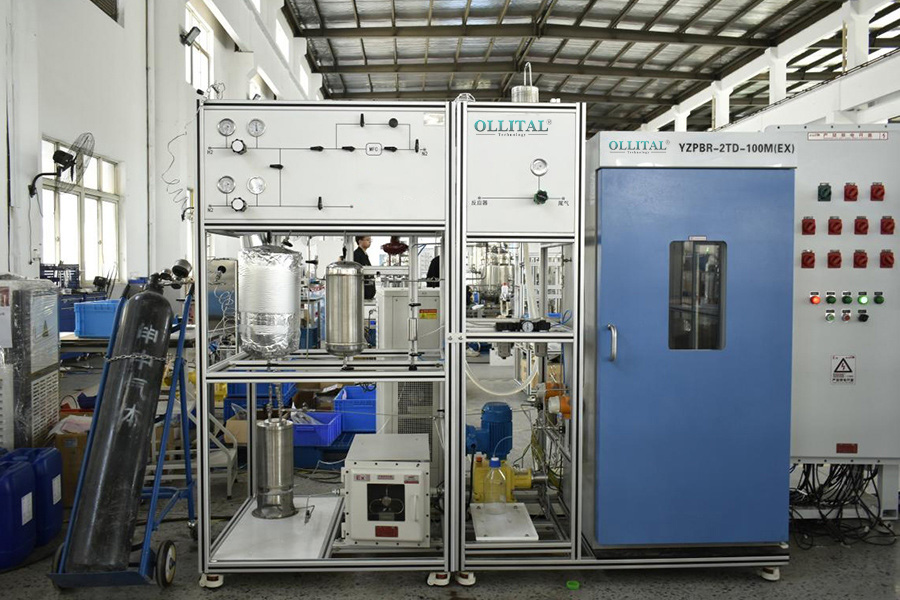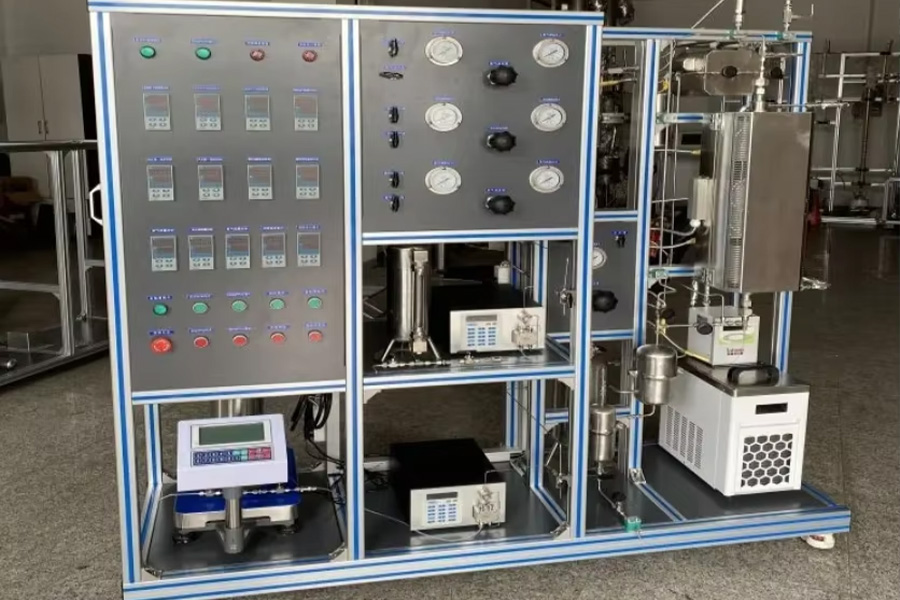High quality 1.5L scale lab spray dryer equipment
Lab scale spray dryer is suitable for the production of in universities, research institutes and food and pharmaceutical chemical enterprises.
Item NO.:
OLT-FD0331Lead Time:
7-15 daysProduct Orgin:
ChinaShipping Port:
XiamenModel Number:
OLT-FD0331Power:
AC 220±22V 50HzWarranty:
1 yearDelivery Time:
7-15 daysThe fixed-bed reactor for synthesizing methanol from carbon dioxide hydrogenation is a high-efficiency reaction equipment with a fixed-bed structure, which is specially designed to convert CO₂ and hydrogen (H₂) into methanol (CH₃OH) under the action of a catalyst. Under the premise of ensuring the safety and stability of the reaction, the equipment achieves high-value utilization of CO₂ resources through precise temperature and pressure control, and at the same time provides strong support for the industrial production of clean fuels.
Parameters
Specifications/range
Description
Reaction temperature
200℃~300℃
Adjustable according to catalyst and process requirements
Working pressure
3~10 MPa
Ensure efficient reaction and improve CO₂ conversion rate
Gas feed ratio
H₂:CO₂ = 3:1 ~ 4:1
Ensure sufficient hydrogen and promote methanol production
Catalyst type
Cu-ZnO-Al₂O₃ and its modified catalyst
High activity, long life, easy to fix
Reactor structure
Fixed bed structure
Catalyst particles are evenly filled, and the gas passes through the catalyst bed from bottom to top
Cooling system
Water cooling/oil cooling system
Efficient heat dissipation to maintain uniform and stable reaction temperature
Raw material purity requirements
CO₂, H₂ purity not less than 99%
Ensure that the reaction process is not disturbed by impurities
Equipment material
High temperature resistant stainless steel or pressure resistant alloy
Ensure long-term stable operation under high temperature and high pressure environment
Automatic control system
PLC intelligent control system
Real-time monitoring of temperature, pressure and flow to ensure process safety and stability


Ollital Technology would like to establish win-win business cooperation with distributors all over the world.
 online service
online service +86 15960821529
+86 15960821529 kevin@ollital.com
kevin@ollital.com kevinollital@gmail.com
kevinollital@gmail.com +86 15960821529
+86 15960821529 +8615960821529
+8615960821529